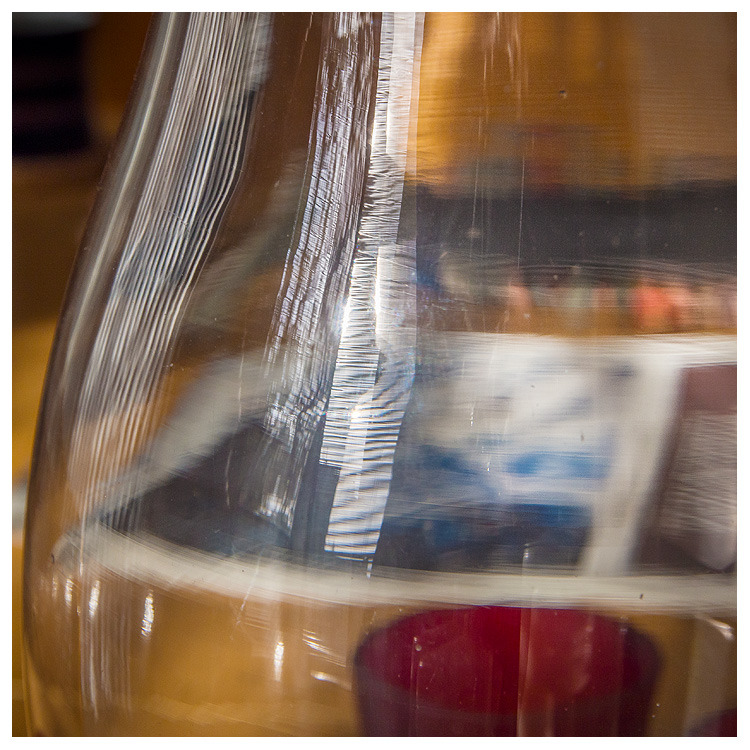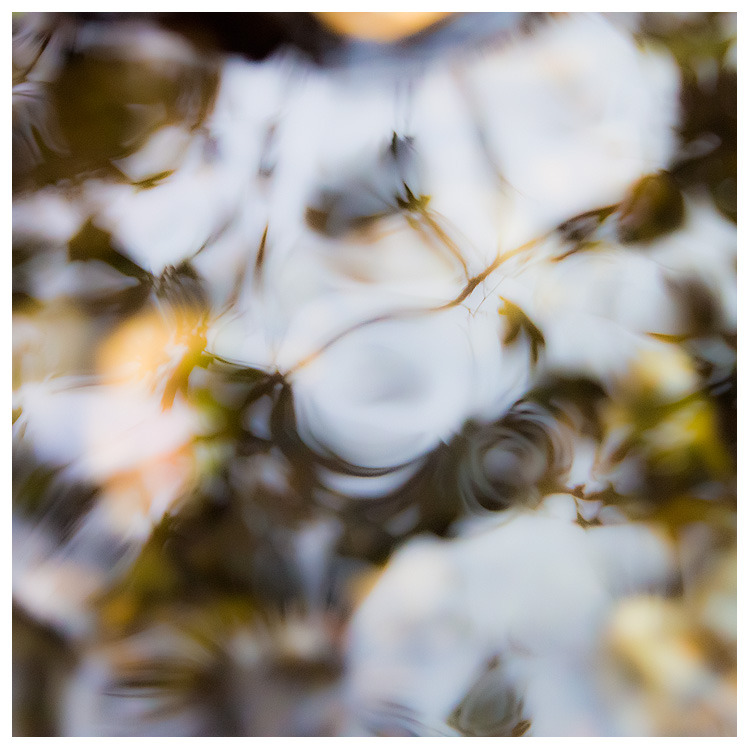I was editing a set of the beautiful new model Edwige, when I came across one picture I really liked. But there was a problem: it was out of focus. Just not sharp.
To make it worse, it was from a Nikon D800, which means enormous files. And when people first see a photo on the web, they will often see it at 100%, just a little slice of the picture. And viewed like that it will look much more blurry than if viewed so you see the whole picture, especially in a print.
I liked it enough that I wanted to salvage it, so I tried Smart Sharpen in Photoshop.
And it is interesting, unlike what Hollywood would like us to believe, you just can't create details in a photo which weren't there to begin with!!
But: you can create the illusion of sharpness, so to speak. What the Sharpness correction tools do is enhance "accutance", which is the border contrast between two areas. Sort of like it makes little ridges along the borders of parts. This makes a photo seem much sharper without actually calling up any more detail than you already could see.
(Click for big pic.) Before:
After:
Abracadabra.
Update: A. said:
Before the age of Photoshop this effect was used, albeit at the negative film development stage, by using an acutance developer such as "Neofin Blue". This was used with minimal agitation so that the exhausted developer from an area that was being developed as a dark area would form a lighter edge to that area, and the fresh developer covering the lighter areas would develop a darker edge to the lighter areas.
(Simplified explanation.)
Peter R. D.
The ultimate developer with this effect was Agfa Rodinal. It made grain rough, and shadows too dark, but by gawd, it make photos looks *sharp*. It was fantastic. Once I had seen photos like that, I didn't helm until I had found out how he did it.
Notes on life, art, photography and technology, by a Danish dropout bohemian.
▼
Saturday, January 04, 2014
Jim Tardio photos, and a tiny zoom lens
Jim Tardio Photos.
I was fortunate to spend the week before Christmas in Rome, Italy. The weather was wonderful, the food was delicious, and the people of the Eternal City were gracious and inviting. I also got the chance to try my new Panasonic GX-7 camera coupled with the new 12-32 pancake zoom lens.
-Great light in his photos.
I took a look at the brand new Panasonic super-compact 12-32mm (24-63mm equivalent) zoom for M4/3, and it is impressive. Both Panasonic and Olympus are making some gargantuan steps in miniturising lenses without sacrificing image quality. (In fact, the reviews of this tiny lens are damn good.)
A "pancake" zoom lens. My world is shook, I thought not it could'est be done.
Thursday, January 02, 2014
New years resolutions
[Thanks to Dave D]
My new years resolutions:VGA
XGA
16MP
1600x2560
and maybe even
4k
"Why I Use Micro Four Thirds Cameras" (updated)
A simple and entertaining explanation of the advantages and disadvantages of the Micro Four Thirds system (which of course includes the Olympus E-M1 mentioned below).
Update:
Russ said...
I've heard other photography pundits describe the Micro Four Thirds system as the new 35mm. Easily transportable and easy to use although limited resolution.
Likewise, because full frame systems (ex., Nikon D800) have such high resolution, they've become the new medium format.
Yes. I'm not surprised others have said that too.
I think it needs adding that this just comparison on principle. Because M4/3 system is in so many ways, including image quality, better than 35mm. And the same is true for full-frame compared to old medium format. Much better, faster, more flexible, etc. And now it's becoming mirrorless, it, like M4/3, is also becoming lighter and more compact. (It'll take a while to make all new lenses, though.)
In other words, they the equivalent of those systems For A New Century. M4/3 for serious-amateur and pro use. Full Frame for pros who are extra serious, or need extra-high resolution (or low light power), or still need to impress their clients with big, heavy, expensive gear.
... Not to forget, if the tech progresses in the next five years like it has in the past five, holy cow, it will far surpass those older systems. Just a couple of years ago, M4/3 was too slow in focusing for moving subjects, and it wasn't really any good over 800 ISO. That has changed dramatically.
Wednesday, January 01, 2014
E-M1 sweeps the awards
In a quite entertaining article, Mike J of The Online Photographer finds his Camera of the Year. It coincides with my own favorite camera, the all-round
scrumptious Olympus OM-D E-M1.
Compact, but tough, fast, sharp, top ergonomics, great anti-shake, excellent selection of lenses...
... Now if only the on-off button was not on the left side of the camera so you can't turn in on one-handedly... Grrrr. (Actually this does not bother me much, but heck, nothing is perfect in this world, there's gotta be something to grumble about.)
(And Michael Reichman of The Luminous Landscape is on the same page.)
Yes, you can get sharper images (in big prints) and go into lower light with a full frame camera like the excellent Nikon D800, but you have to weigh this (literally) against the significantly added weight of those cameras and lenses. And their bigger sizes, and the bigger prices. All of those tend to be about 2x or more, so far from insignificant.
Me, I think that Micro Four Thirds is the new 35mm, and Full Frame is the new Medium Format.
scrumptious Olympus OM-D E-M1.
Compact, but tough, fast, sharp, top ergonomics, great anti-shake, excellent selection of lenses...
... Now if only the on-off button was not on the left side of the camera so you can't turn in on one-handedly... Grrrr. (Actually this does not bother me much, but heck, nothing is perfect in this world, there's gotta be something to grumble about.)
(And Michael Reichman of The Luminous Landscape is on the same page.)
Yes, you can get sharper images (in big prints) and go into lower light with a full frame camera like the excellent Nikon D800, but you have to weigh this (literally) against the significantly added weight of those cameras and lenses. And their bigger sizes, and the bigger prices. All of those tend to be about 2x or more, so far from insignificant.
Me, I think that Micro Four Thirds is the new 35mm, and Full Frame is the new Medium Format.
Tuesday, December 31, 2013
Monday, December 30, 2013
Stephen Gillette photos
Our old pal Stephen Gillette (no, sadly no heir to the Gillette fortune), a fellow connoiseur of compact cameras, still makes cool photos.
Amongst other things, he has made a series of circular photos, something you don't see often these days.















